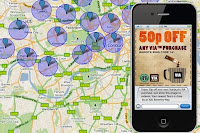Well I was looking into Potential NFC Benefits or use cases which we can use it for. Few of the first primary target is the Financial Sector. Most of the usecase are about Mobile Money. (like the Google Wallet). First I was very much interested/excited in the Mobile Money kind proposition, slowly came to realization that it has too many overheads. You need to sync up with a BANK, then Involve Retailers, etc etc too much of hassle if you take the INDIAN Market.
Here are few things which I think can be used other than Financial Sector.
- NFC card for getting into your hotel room.
- NFC enabled Phone as your car keys.
- your business card.
- your public transportation.
- concert, sports or other event tickets.
- your boarding pass for getting on a plane.
- coupons and Many more.
Then I came across an article, quite interesting.
"Well-known entrepreneur and investor and former Google SA boss Stafford Masie believes near-field communication (NFC) technology will fail as a mainstream transactional platform and local banks' attempts to implement systems based on it are "farcical" and offer "no value" "
Masie Proposes about new Technology called GeoFencing. But this is again catering to the SmartPhones.
(fyi - INDIAN NON SMARTPHONE market is around 70% of the total Mobile Market - though Smartphone Market is increasing, non-smartphone market has not seen a slump - will post Analysis on this)
Geo-fencing creates virtual perimeters around a merchant and if someone is within that perimeter with a supported device (usually a smartphone) then a transaction can take place, but without the need for any need to swipe a card or establish contact between a device and reader. They simply pay with their presence and their face appears on the merchant's point of sale terminal with their name.
A celebrated example of geo-fenced payments is Square Card Case (video below), which runs on the iPhone and Android-based smartphones. It reads a repository of geo-fenced merchants on a map and allows users to permit merchants to withdraw money electronically from their wallets.


Comments
Post a Comment